If you look at the world of dividend-growth stocks, you’ll find a lot of bullish sentiment from the Wall Street professionals tasked with researching these companies.
It’s not difficult to see why.
A dividend program, in and of itself, is a powerful statement by corporate management about their company’s ability to generate profits—specifically, it implies that they expect to produce enough in earnings on a regular basis that they can share some of it with us. Now imagine what it means when a company builds a track record of growing those dividends each and every year.
However, as bullish as “the Street” might be about dividend growers as a whole, research firms clearly favor some dividend-growth stocks more than others … and those are the stocks we’re interested in talking about today.
Read on as I introduce you to some of the best dividend-growth stocks you can buy, as measured by consensus ratings across dozens of Wall Street analysts.
Disclaimer: This article does not constitute individualized investment advice. These securities appear for your consideration and not as investment recommendations. Act at your own discretion.
3 Reasons to Value Dividend Growth
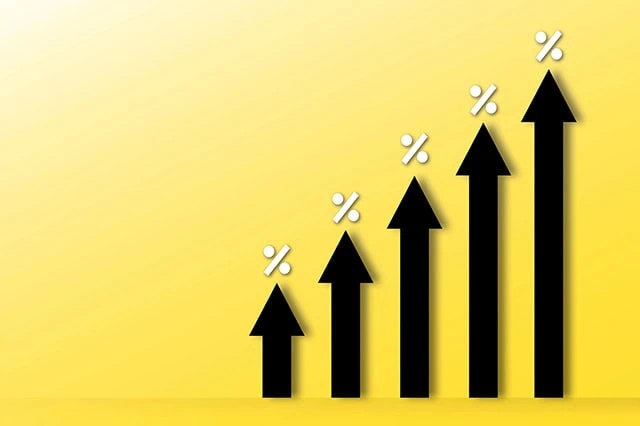
Let’s say you owned shares of the presently fictional Woodley Co. (WC). If one day, WC suddenly informed shareholders that it would be paying, say, a dollar per share per year from now on, we’d be pretty happy campers—after all, a dollar per year of returns we couldn’t really count on before.
But if Woodley Co. started paying us a dollar per share one year, then raised it every year after that, we’d be downright euphoric. Why? Well, I can think of three reasons:
- A higher dividend over time means a higher “yield on cost” for us. Let’s say you bought a WC share for $100. That $1-per-share annual dividend would equal a 1% yield on your purchase. If the stock price and dividend both doubled, to $200 per share and $2, respectively, new investors would still be buying at a 1% yield. But you? You’d be earning 2% on your original $100 purchase.
- A higher dividend over time fends off inflation. In most years, you experience inflation, which is when the worth of our currency slightly declines. So $1 worth of groceries, gas, etc. this year will generally buy you slightly less groceries, gas, etc. next year. High inflation over the past few years really drives home this point—according to the U.S. Bureau of Labor Statistics, in January 2025 you would need $1.88 to buy what $1 could have bought in January 2020, right before the COVID pandemic hit a fever pitch. So if you receive $1 in dividends every year in perpetuity, your dividend income will lose its value over time. But if that initial $1 dividend is raised enough every year, your income could keep pace with (or even outrun) inflation.
- A higher dividend can be a sign of quality. Just like initiating a dividend says “we have so much money that you can have some,” a track record of raising dividends typically signals a company’s ability to continue growing its bottom line.
Put simply: Regular dividend growth signals a higher caliber of operations (and thus potentially a higher caliber of stock), and it puts more money in our pockets. That’s a lot to love.
Do you want to get serious about saving and planning for retirement? Sign up for Retire With Riley, Young and the Invested’s free retirement planning newsletter.
Keep an Eye on Dividend Payout Ratios
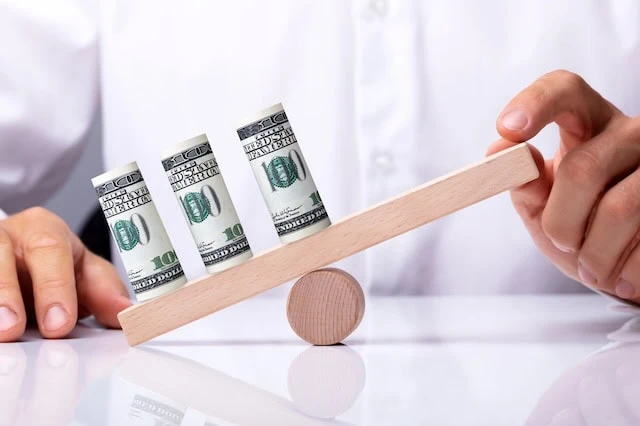
Whenever you’re considering any dividend stock, among the metrics you’ll want to factor in is the dividend payout ratio.
The dividend payout ratio—what percentage of profits is being used to pay the dividend—is a “quick and dirty” way that the average investor can get an idea of how sustainable a dividend is. It’s a simple calculation: dividends per share (DPS) / annual earnings per share (EPS) = dividend payout ratio.
I’ll use extreme examples to get the point across:
- Company A pays $1 per share in annual dividends and is expected to finish the year with $10 per share in earnings. $1 in DPS / $10 in EPS = 10% payout ratio.
- Company B pays $10 per share in annual dividends and is expected to finish the year with $10 per share in earnings. $10 in DPS / $10 in EPS = 100% payout ratio.
Which company do you think has a more sustainable dividend?
While an earnings-based payout ratio isn’t a perfect metric (dividends are technically paid from cash flow, not profits, and certain types of companies use more specialized measures of profitability), it’s generally fair to assume Company A has a safer payout than Company B. If Company A’s earnings suddenly fall by half in a given year, it can still pay its dividend with plenty of room to spare. If Company B’s earnings suddenly fall by half, however, it will be paying out nearly twice what it’s bringing in.
You can use this same logic to make an educated assumption about a company’s ability to grow its dividends going forward. If Company A and Company B—two companies in the same sector with a similar business model—have payout ratios of, say, 10% and 80%, you could reason that Company A has more runway to grow its dividend.
To be clear, though: There’s no “exactitude” as it pertains to dividend payout ratios. But if you need a general guide? Depending on who you’re asking, anywhere between 30% and 60% is perfectly healthy with room to grow, below 30% implies miles of runway, between 60% and 80% might be sustainable but probably not much room to grow, and between 80% and 100% could be worrisome from dividend-growth and dividend-safety perspectives.
Related: The 9 Best Dividend Funds You Can Buy Now
Dividend-Growth Stocks That Wall Street Loves
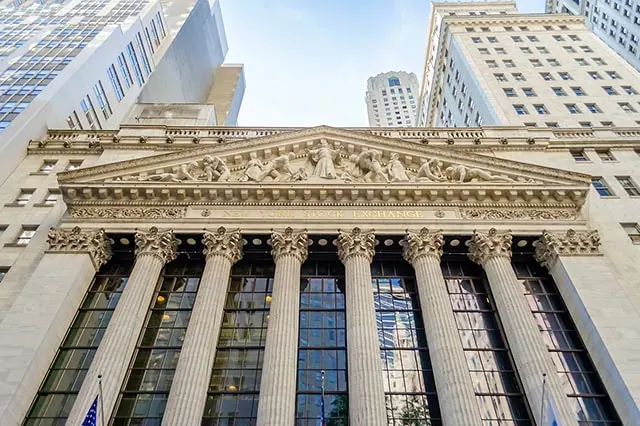
Here’s how I came up with today’s list of highly rated dividend-growth stocks.
I started with a “selection universe” of the 500 companies within the S&P 500 Index. Next, I included only companies with 10 or more years of uninterrupted annual dividend growth. (These companies are frequently referred to as “Dividend Achievers.”)
From there, I excluded any company with a consensus analyst rating (provided by S&P Global Market Intelligence) of Hold or below. S&P boils down consensus ratings down to a numerical system where …
- 1 to 1.5: Strong Buy
- 1.5 to 2.5: Buy
- 2.5 to 3.5: Hold
- 3.5 to 4.5: Sell
- 4.5 to 5: Strong Sell
In fact, every dividend-growth stock on this list has a rating of 2 or less, indicating that at worst they enjoy a very firm consensus Buy rating, if not an outright Strong Buy rating.
From there, I selected some of the highest-rating dividend stocks that qualified, but with a firm eye on creating a somewhat diversified list. Specifically, no sector is represented by more than two stocks.
IYou might have noticed that yield wasn’t even a consideration. Dividend growers often don’t have a high current yield—and if you’re taking the long view, they don’t necessarily need to. If a company yielding 1% today has a commitment to robust dividend growth, that same stock could yield 3%, 4%, or even more as the years roll by.
The stocks are listed below, in descending order of their consensus rating (from the “worst” rating to the best).
Best Dividend-Growth Stock #10: Cardinal Health
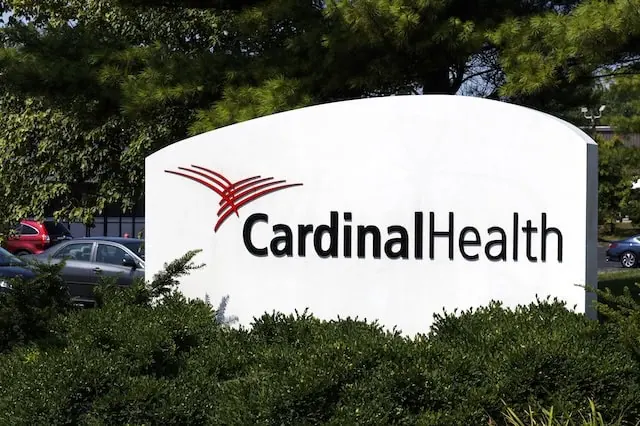
- Sector: Health care
- Market cap: $37.4 billion
- Dividend yield: 1.3%
- Consensus analyst rating: 1.69 (Buy)
Cardinal Health (CAH) is an essential cog in the health care machine, providing both products and services to hospitals, health care systems, pharmacies, ambulatory surgery centers, physician offices, even home patients.
Just a small sample of its offerings include distributing branded, generic, and specialty pharmaceutical, medical supplies, over-the-counter health care products, and consumer products; pharmacy management services; Cardinal Health-manufactured and branded medical, surgical, and laboratory products; and supply chain services.
It’s a wide reach that offers both revenue diversification across the health care sector, as well as ample opportunity for growth in several of its segments.
“Our Buy rating on CAH is driven by the company’s organic growth profile within the core pharma distribution segment, which will likely outpace peers over the next year,” says BofA Global Research analyst Allen Lutz. “We believe new and existing customer growth, unique PBM tailwind, and specialty assets should support [earnings before interest and taxes, or EBIT] growth ahead of peers. Core pharma growth should provide baseline support in a healthy end-market, offsetting risks around recent customer losses and potential volatility/increased competition within the medical segment.”
Cardinal Health isn’t just one of the best dividend-growth stocks right now. It’s one of a few Dividend Aristocrats—companies with 25 or more years of uninterrupted dividend growth—on this list. CAH extended its streak of payout increases to 29 years In May 2025, when it improved its cash distribution by 1% to 51.07¢ per share. Moreover, a low payout ratio of just above 20% means there’s plenty of headway for further increases.
Related: 15 Best Investing Research & Stock Analysis Websites
Best Dividend-Growth Stock #9: Equinix
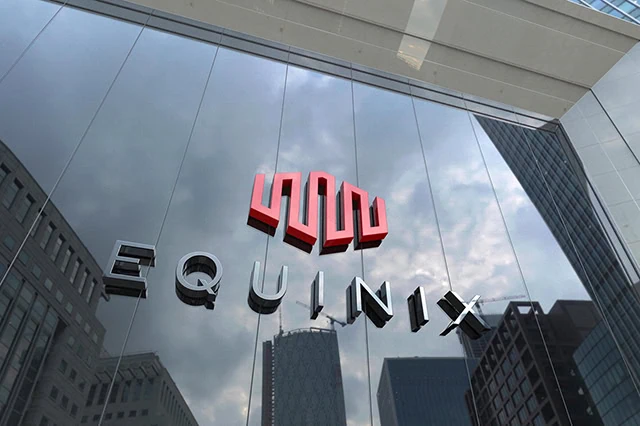
- Sector: Real estate
- Market cap: $75.7 billion
- Dividend yield: 2.4%
- Consensus analyst rating: 1.68 (Buy)
Equinix (EQIX) is a real estate play on numerous technological megatrends, including cloud computing, big data, and artificial intelligence.
EQIX is the largest global data center and colocation provider for enterprise networks. In other words, Equinix is responsible for the actual server rooms that house all the bits and bytes that power all the content and software we offload to “the cloud” without really considering where the cloud is.
Considering the fact that cloud-based software is now just the normal way of doing business, that creates a massive opportunity for Equinix as one of the largest specialized firms in the space. This digital infrastructure provider boasts almost half a million connections to more than 10,000 customers, with a global reach of 75 metro areas in 35 countries. Those numbers will surely grow, with the company currently working on 56 projects in 24 countries.
“We continue to expect strong demand for the data center category over the next few years given core and cloud infrastructure needs, as well as expanding demand for GenAI workloads,” says Citi analyst Michael Rollins, who rates the stock at Buy. That’s just one of 21 Buy-equivalent ratings on the stock, which compares well to just seven Holds and no Sells.
As for the dividend growth? Equinix just clears the bar with 10 consecutive years of annual dividend growth. But that growth has been explosive, with the quarterly distribution rocketing a cumulative 178% higher since EQIX started paying regular dividends in 2015.
By the way: EQIX is a real estate investment (REIT), which is a specially structured business that exists to empower the general public to invest in real estate. The upside? REITs must pay at least 90% of their taxable income to shareholders, which usually results in above-average yields. The downside? While many stocks’ dividends are usually “qualified” and thus taxed at more favorable long-term capital gains tax rates, REITs’ dividends (including Equinix’s) are generally non-qualified and thus taxed at less favorable ordinary income tax rates.
REITs are also different from a payout ratio perspective. REITs frequently use a non-GAAP (generally accepted accounting principles) metric called “funds from operations” (FFO) to express their profitability, and they’re typically a better gauge of dividend health than regular earnings. In EQIX’s case, it’s paying 50% of estimated adjusted FFO (AFFO), which implies the dividend is plenty secure.
Related: 7 High-Quality, High-Yield Dividend Stocks
Best Dividend-Growth Stock #8: American Tower

- Sector: Real estate
- Market cap: $89.5 billion
- Dividend yield: 3.5%
- Consensus analyst rating: 1.68 (Buy)
American Tower (AMT) is another large, global REIT—one that owns and operates multitenant communications real estate. This includes telecom towers that it rents to wireless providers, fiber optic networks, data centers, and other important infrastructure components that power our digital lives.
With a portfolio of about 150,000 different properties and massive demand for telecommunications from both businesses and consumers alike regardless of the macroeconomic picture, AMT offers incredible reliability.
Admittedly, growth potential in the U.S. is modest given that America’s mobile giants have slowed spending now that 5G has largely been rolled out. However, it still has exposure to the international expansion of 5G, as well as data centers via its 2021 acquisition of CoreSite.
“The REIT has maintained top-line growth and earnings momentum in spite of lower wireless spending, overall,” says Argus Research analyst Marie Ferguson, who rates the stock at Buy. “The company generates solid margins from each additional tenant and, after facing losses from nonpayment with its largest client in India, the REIT sold those operations in 3Q24. We think the exit from the region will be a long-term positive and with expansion focused on other geographic areas in 2025.”
All told, American Tower enjoys 17 Buys, five Holds, and no Sells from the analyst community.
While AMT ranks among the best dividend-growth stocks, it might raise a few eyeballs. That’s because in the first quarter of 2024, it announced a roughly 5% cut in its payout after years of uninterrupted quarterly hikes. However, it still ended up paying out more across 2024 than it did in 2025, and it raised its payout back to $1.70 per share to kick off 2025. That improved its streak to 13 years. In the meantime, its current dividend level is roughly 65% of AFFO—a healthy level.
Related: How to Get Free Stocks for Signing Up: 10 Apps w/Free Shares
Best Dividend-Growth Stock #7: L3Harris Technologies

- Sector: Industrials
- Market cap: $55.5 billion
- Dividend yield: 1.6%
- Consensus analyst rating: 1.65 (Buy)
L3Harris Technologies (LHX) is a defense contractor that provides a variety of solutions for both government and commercial customers.
It operates in four segments: Space & Airborne Systems (satellite space solutions, classified intelligence, airborne combat systems, and more); Integrated Mission Systems (ISR systems, passive sensing and targeting, electronic attack platforms, and more); Communication Systems (tactical radios, waveforms, satellite terminals, and more); and Aerojet Rocketdyne (propulsion technologies and armament systems, space propulsion and power systems, and more).
It’s difficult to overstate the relative security of a company that gets much of its revenues from the federal government, which signs off on higher defense budgets over and over again. But LHX is a particularly well-liked defense stock among the analyst set, earning 14 Buys versus five Holds and one Sell.
“We believe LHX has a portfolio of next-generation capabilities spanning unmanned, advanced communications, electronic warfare, space, and cyber that will continue to be in high demand to meet next-gen requirements to deter near-peer adversaries while modernizing legacy systems,” says Truist Managing Director Michael Ciarmoli, who rates the stock at Buy. “With opportunities for material reductions in corporate overhead, supply chain and facility consolidations, we believe ongoing synergy realization will continue to provide tailwinds to margins or allow for current supply chain disruption offsets.”
L3Harris is actually on the verge of Dividend Aristocracy, registering its 24th consecutive hike when it raised from $1.16 per share to $1.20 in February 2025. Annualized, that comes out to less than half of this year’s expected earnings, which gives LHX considerable space to hit the quarter-century mark in 2026.
Related: 17 Best Investment Apps and Platforms [Free + Paid]
Best Dividend-Growth Stock #6: Visa

- Sector: Financials
- Market cap: $671.5 billion
- Dividend yield: 0.7%
- Consensus analyst rating: 1.64 (Buy)
Visa (V) is the world’s top payment card network, spanning some 4.8 billion Visa credit and debit cards accepted at more than 150 million locations in over 200 countries and territories. It’s not just individual consumers who swipe with Visa, either—many businesses actually purchase from other businesses using Visa’s plastic.
But what’s interesting about Visa is that, despite making it possible for literally $16 trillion-plus worth of annual transactions to go through, the company isn’t really responsible for any of the underlying funds. Visa itself is not a bank—instead, some 14,500-plus banks and other financial institutions use Visa’s technology to give its customers the ability to spend anywhere, anytime. So, if you use a Chase Visa, Chase Bank is taking on the financial risk; Visa is just the middleman between merchant and bank.
Not that Visa is exactly resting on its laurels as the leading card provider.
“We continue to be impressed by Visa’s myriad global growth drivers that capitalize on a secular electronic payments shift,” say William Blair’s Andrew Jeffrey and Cristopher Kennedy, who rate the stock at Outperform (equivalent of Buy). “For example, Visa Flexible Credential allows consumers to fund transactions with their choice of card and lets them elect to pay over time. The company’s emerging stablecoin solutions should accelerate its CMS business (about 13% of volume) by integrating these capabilities into Visa Direct. The company’s market-leading money movement and payout network again posted 25% transaction growth, with potential acceleration as the company integrates with banks and builds on 15 billion-plus endpoints.”
Visa currently enjoys 30 Buy ratings against eight Holds and one Sell, putting it firmly above the best-rated dividend-growth stocks you can buy.
About that dividend growth: Visa’s streak is at 16 consecutive years, and it has delivered a stellar 390% improvement on the payout over the past decade. Its most recent hike was a 13% boost to 59¢ per share. That’s just 20% of expected earnings for the year, giving Visa the flexibility to keep the pedal down.
Related: 7 High-Quality, High-Yield Dividend Stocks
Best Dividend-Growth Stock #5: Vulcan Materials
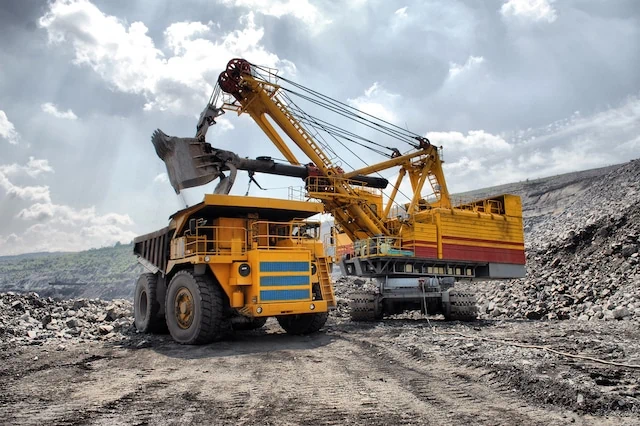
- Sector: Materials
- Market cap: $40.1 billion
- Dividend yield: 0.7%
- Consensus analyst rating: 1.62 (Buy)
Vulcan Materials (VMC) is a materials company serving the construction industry. It’s America’s largest producer of construction aggregates (crushed stone, sand, and gravel), and it also produces construction materials such as asphalt and ready-mixed concrete. These materials are used in building and maintaining highways and streets, as well as in the construction of housing and nonresidential facilities.
Vulcan’s business is far more cyclical than most of the other dividend-growth stocks on this list, but at least in the short-term, there are a few drivers that could keep propelling VMC. Declining interest rates could help revitalize residential construction, construction materials are rising in price, and the administration’s overall deregulatory stance could benefit the company, too.
“We like VMC’s aggregates focus, favorable footprint across the South, and continuous improvement culture driving best-in-class unit profitability,” says Stifel analyst Brian Brophy, who represents one of the 17 Buy calls on the stock, versus three Holds and one Sell. “While the industry will likely remain cyclical and competitive, we think VMC’s operational focus should set the company up favorably longer-term.”
VMC has put up a respectable 12-year streak of dividend increases. The latest was a 6%-plus bump to 49¢ per share, announced in February 2025. That represents a quarter of profits, indicating that Vulcan’s dividend is extremely well-covered. But highly cyclical companies generally need to keep more modest payout ratios so they can sustain their payouts during leaner years, so investors might not necessarily expect aggressive dividend growth from here.
Do you want to get serious about saving and planning for retirement? Sign up for Retire With Riley, Young and the Invested’s free retirement planning newsletter.
Best Dividend-Growth Stock #4: Coca-Cola

- Sector: Consumer staples
- Market cap: $284.5 billion
- Dividend yield: 3.1%
- Consensus analyst rating: 1.56 (Buy)
The consumer staples sector, which deals in basic-necessity goods, is teeming with dividend growers. It’s pretty easy to understand why. When times get tough, households might spend less on vacations and designer jeans, but they’re not going to stop going to the grocery store. (This is why staples make for some of the best dividend stocks for beginners, too.)
Take Atlanta-based beverage titan Coca-Cola (KO), which has more than 130 years of operating history and currently serves up more than 200 brands to more than 200 countries and territories.
Sugary soft drinks might not be a growth business in an age of healthier living, but Coca-Cola products still enjoy strong baseline demand. But more importantly: This mega-cap powerhouse is more than just Coke. Coca-Cola boasts a wide variety of other beverage brands, including Vitaminwater and Dasani water, Fuze teas, Powerade sports drinks, Minute Maid juices, Costa Coffee, Fairlife ultra-filtered milk, and many more drinks that are likely to meet your definition of a household staple.
But Coke isn’t just a consumer staples stock—it’s one of the best, boasting a huge bull contingent of 22 Buys versus three Holds and not a single Sell call right now.
“Coke remains our top pick, with strong and durable pricing power, existing historical volume growth, sustained market share gains, as well as increasing contribution from the high-growth Fairlife brand,” says Morgan Stanley analyst Dara Mohsenian. BNP Paribas Exane senior research analyst Kevin Grundy (Outperform) also cites the “under-appreciated Fairlife contribution” in his bull thesis, as well as a “best-in-class portfolio, market share, return of capital, free cash flow story … [and] attractive valuation.”
Coca-Cola currently boasts 63 years of unfettered dividend growth, making it not just a Dividend Aristocrat, but a Dividend King (at least 50 years of increases). Its most recent hike came in February 2025, when it bumped the payout 5% higher to 51¢ per share. That comes out to a payout ratio of 70%, which is elevated compared to many of the names on this list. It’s still a very manageable number for a consistent company like Coca-Cola, but it does limit the company’s ability to rapidly improve the payout.
Related: Direct Indexing: A (Tax-)Smarter Way to Index Your Investments
Best Dividend-Growth Stock #3: S&P Global
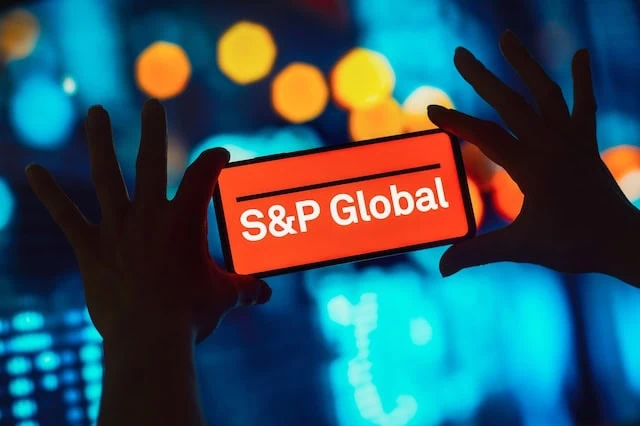
- Sector: Financials
- Market cap: $147.7 billion
- Dividend yield: 0.8%
- Consensus analyst rating: 1.32 (Strong Buy)
S&P Global (SPGI)—parent of S&P Dow Jones Indices, which produces the S&P 500—is one of the highest-rated dividend stocks on the market, and the highest-rated Dividend Aristocrat of them all.
The S&P 500, of course, is America’s most ubiquitous index—literally trillions of dollars worth of fund assets are either indexed to it or benchmarked against it. (And as I point out every year in my list of the best ETFs, active managers have a really hard time beating it.)
But S&P Global is more than just the S&P 500. It’s also responsible for the Dow Jones Industrial Average, the Dow Jones Transportation Index (the oldest index in use), and more than a million other indexes across a number of asset classes. It’s also home to …
- S&P Global Ratings: Credit ratings, research, and analytics
- S&P Global Commodity Insights: Information and benchmark prices for commodities and energy
- S&P Global Market Intelligence: A wide variety of financial markets and asset data and analytics, enterprise technology, and advisory services.
- S&P Global Mobility: Solutions for vehicle manufacturers, automotive suppliers, mobility service providers, and other companies in the automotive value chain. (Note: The company announced this year that Mobility will be spun off, likely sometime in 2026.)
“We look favorably upon SPGI’s long-term prospects,” says Oppenheimer analyst Owen Lau (Outperform), one of 24 analysts with Buy-equivalent calls on SPGI, versus one Hold and no Sells. “Other than enjoying secular tailwinds, including rising corporate debt, ESG, the data explosion, and active-to-passive investing, SPGI also has strong fundamentals including oligopolistic positions in many areas, a scalable platform, and shareholder-friendly capital return policies to support its premium valuation.”
SPGI is one of the best dividend-growth stocks in large part because of these varied and growing sets of businesses, which have allowed S&P Global to pay dividends every year since 1937, and grow them for 52 consecutive years. SPGI’s latest improvement was a 5.5% bump, to 96¢ per share, announced in January 2025. That’s less than a quarter of the company’s expected annual profit this year, so SPGI has plenty of resources to keep its streak alive going forward.
Related: 8 Best Stock Portfolio Tracking Apps [Stock Portfolio Trackers]
Best Dividend-Growth Stock #2: Broadcom

- Sector: Technology
- Market cap: $1.6 trillion
- Dividend yield: 0.7%
- Consensus analyst rating: 1.28 (Strong Buy)
Broadcom (AVGO) is one of the world’s largest semiconductor companies. It designs, develops, manufactures, and supplies semiconductor and infrastructure software products for a wide variety of uses, including (but hardly limited to) artificial intelligence (AI), data centers, networking, wireless, storage, and industrial automation.
The company has been an innovator in its own right, but you can also chalk up much of its scale to a history of aggressive merger-and-acquisition (M&A) activity. The company—itself the product of a 2016 merger between Broadcom Corporation and Avago Technologies (hence the AVGO ticker)—has swallowed up the likes of LSI Corporation, Brocade, CA Technologies, VMware, and Symantec’s enterprise security business.
Regardless of how it got there, the resulting entity is one of Wall Street’s most beloved chip stocks.
“We believe AVGO has one of the most strategically and financially attractive business models in semiconductors,” say Oppenheimer analysts, who rate the stock at Outperform. Among the reasons they love Broadcom are a “sustained competitive advantage in the high-end filter market, a ‘sticky’ non-mobile business, efficiently managed manufactory, and substantial earnings and free cash flow growth.
That last point is the main driver behind the company’s rapidly growing dividend, which has exploded by 80% in just the past five years alone. Its 11% hike, to 59¢ per share in December 2024, marked its 15th consecutive increase. And at 35% of profits, Broadcom has much more room to share.
Related: The 8 Best Dividend ETFs [Get Income + Diversify]
Best Dividend-Growth Stock #1: Microsoft

- Sector: Technology
- Market cap: $3.8 trillion
- Dividend yield: 0.7%
- Consensus analyst rating: 1.26 (Strong Buy)
Microsoft (MSFT) isn’t just the best dividend-growth stock according to Wall Street’s analyst community. It’s a dominant tech stock that has grown to nearly $4 trillion in value … and it’s showing no signs of slowing down.
Curiously, part of Microsoft’s growth can be chalked up to its attraction as a technological safe haven. It’s an extremely diversified company, boasting “sticky” enterprise software, cloud, business intelligence, video games, and more—not to mention it’s sitting on about $95 billion in cash and investments.
The other part of Microsoft’s growth? Good ol’ fashioned growth growth.
“CEO Satya Nadella sees GenAI as a rare change to a fundamental computing paradigm, and Microsoft is moving to exploit the opportunities opened by Gen AI as quickly as possible, as demand currently outstrips the supply of its cloud services,” says Argus Research analyst Joseph Bonner (Buy). “Microsoft is racing against competitors Alphabet and Meta, as well as a host of smaller AI startups, to develop the new GenAI models/applications that may drive the emerging GenAI market as a whole.”
Microsoft is one of the most established names in tech, so no wonder that it has one of the sector’s most established dividends, at 20 consecutive years. The latest one was announced in September 2025—a nearly 10% improvement to 91¢ per share that represents less than a quarter of 2025’s expected profits.
MSFT is the Street’s most-loved dividend-growth stock right now, too, at an incredible 57 Buy calls versus a lone Hold and no Sells.
Related: 11 Best Stock Trading Apps [Free + Paid]
Want to talk more about your financial goals or concerns? Our services include comprehensive financial planning, investment management, estate planning, taxes, and more! Schedule a call with Riley to discuss what you need, and what we can do for you.
What Is Dividend Yield?
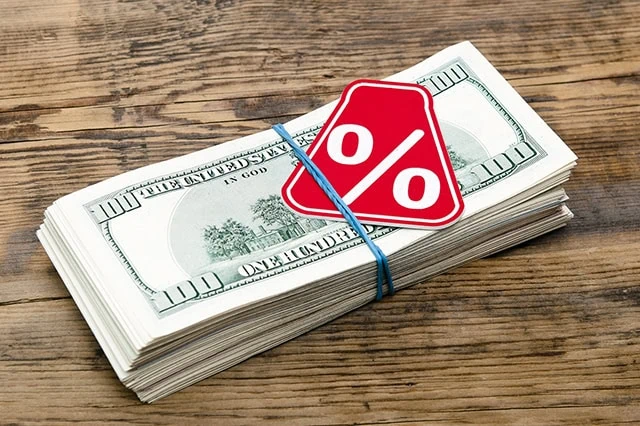
Perhaps the most important metric in the dividend universe is known as dividend yield. This is a simple financial ratio that tells you the percentage of a company’s share price that is paid out across a year’s worth of dividend distributions.
Expressed as a mathematical equation, it’s simply:
Dividend yield = annual dividend / price x 100
The idea here is to normalize dividend payments regardless of stock price, different quarterly payments, even different payment frequencies (quarterly is normal, but some dividend stocks pay monthly, while others pay semiannually or annually).
For instance, each of the following fictional stocks all have a dividend yield of 2.5%:
- Alpha Corp. currently trades for $40 a share. It pays a 25¢ quarterly dividend, for $1.00 per year in full. ($1 / $40 x 100 = 2.5%)
- Beta Inc. pays $1 in the first quarter, $2 in Q2, $3 in Q3 and $4 in Q4. That’s $10 in dividends for the full year. It trades for $400 a share. ($10 / $400 x 100 = 2.5%)
- Gamma Ltd. pays $2.50 just once per year. It trades for $100 a share. ($2.50 / $100 x 100 = 2.5%)
The idea is to focus on the percent of your initial investment you get back, and help you compare apples to apples.
Taking this math a step further, you learn that a company can suddenly feature a very high dividend yield through one of two very different ways: the share price falling very quickly, or the dividend growing very rapidly.
Alpha Corp., which trades for $40 per share, pays a 25¢ quarterly dividend that yields 2.5%. In a month, it yields 5.0%. Here are two ways that could have happened.
- Alpha Corp. doubled its dividend to 50¢ per share, for a full $2 per share across the year. The share price stays the same. ($2 / $40 x 100 = 5.0%)
- Alpha Corp. kept its dividend the same, but its share price plunged in half to $20 per share. ($1 / $20 x 100 = 5.0%)
Clearly, that 5% yield appears to be much safer and reliable in one scenario than the other.
What Is ‘Yield on Cost’?
When you look up a stock’s information, the dividend yield listed is based on the most recent dividend and the current stock price.
That yield is often actually different than the one current shareholders enjoy. That yield is called “yield on cost,” which is the payout based on what you paid, at the moment you invested.
Let’s say you buy a stock at $100, and it pays $1 per share. It yields 1.0% when you buy it ($1 / $100 x 100 = 1.0%).
In a year, that stock has doubled to $200 per share, and it also doubled its dividend to $2 per share. If you look up its information, its dividend is still 1.0% ($2 / $200 x 100 = 1.0%).
That’s not your yield on cost, however. You’re still receiving that higher dividend of $2 per share. But your cost basis is still the original $100 you bought the share at. So now, your yield on cost has doubled, to 2.0% ($2 / $100 * 100 = 2.0%)!
Related: What Are the Average Retirement Savings By Age?
Want to talk more about your financial goals or concerns? Our services include comprehensive financial planning, investment management, estate planning, taxes, and more! Schedule a call with Riley to discuss what you need, and what we can do for you.





![7 Best Vanguard Dividend Funds [Low-Cost Income] 34 Many hundred dollar bills against a light background.](https://youngandtheinvested.com/wp-content/uploads/cash-dividends-money-folded-bills-1200-600x403.webp)
![5 Best Tech Dividend Stocks [According to the Pros] 35 tech stocks growth market tickers jumbotron 1200](https://youngandtheinvested.com/wp-content/uploads/tech-stocks-growth-market-tickers-1200-600x403.webp)

